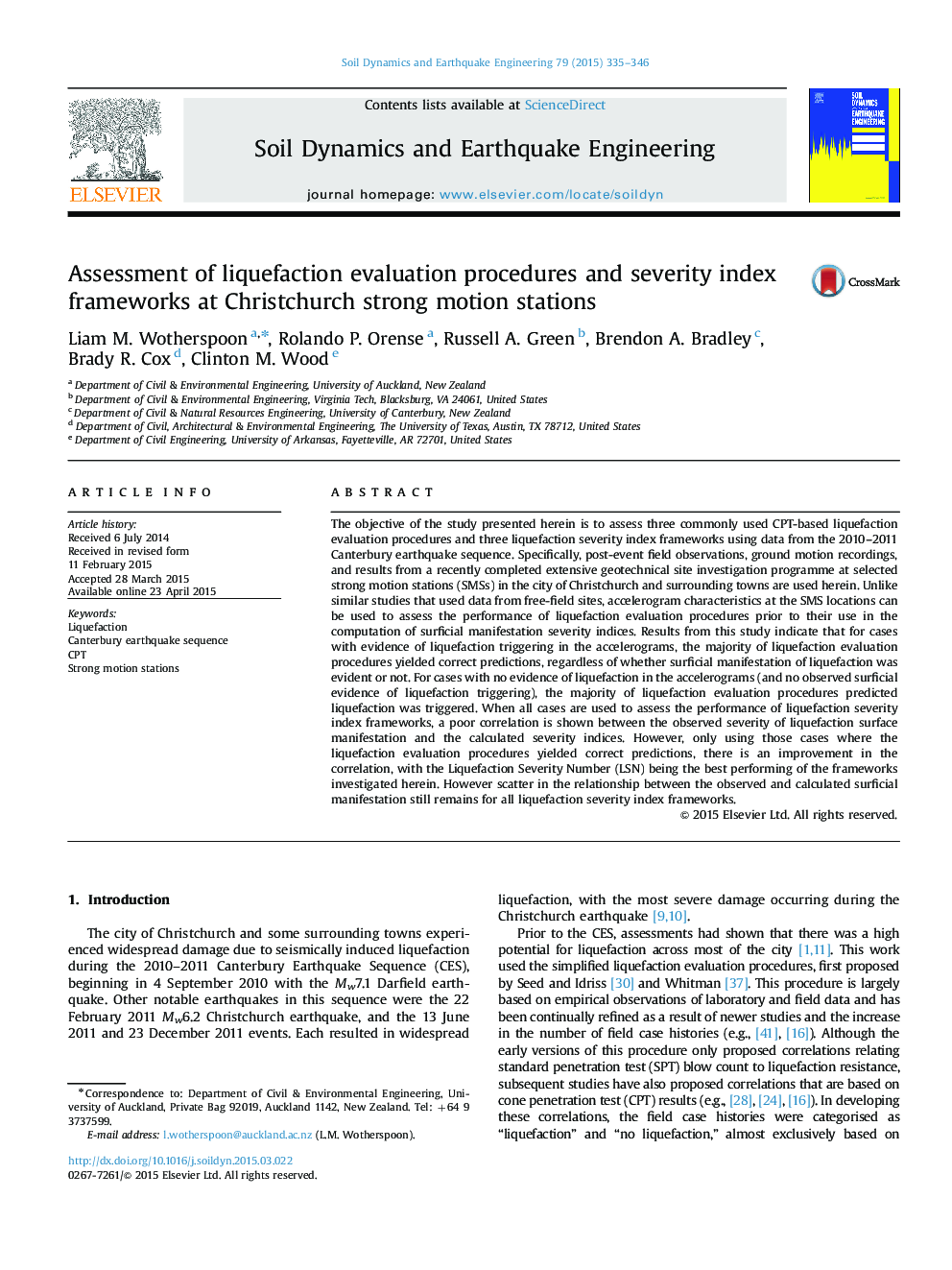| کد مقاله | کد نشریه | سال انتشار | مقاله انگلیسی | نسخه تمام متن |
|---|---|---|---|---|
| 303982 | 512767 | 2015 | 12 صفحه PDF | دانلود رایگان |
• CPT liquefaction evaluation methods assessed using accelerograms and manifestations.
• Procedures typically provided satisfactory or under-predicted factors of safety.
• Accelerograms allow for a more rigorous assessment of liquefaction severity indices.
• Under predicted FOS led to poorly correlated observed and calculated manifestation.
• LSN provided best correlation between observed and calculated manifestation severity.
The objective of the study presented herein is to assess three commonly used CPT-based liquefaction evaluation procedures and three liquefaction severity index frameworks using data from the 2010–2011 Canterbury earthquake sequence. Specifically, post-event field observations, ground motion recordings, and results from a recently completed extensive geotechnical site investigation programme at selected strong motion stations (SMSs) in the city of Christchurch and surrounding towns are used herein. Unlike similar studies that used data from free-field sites, accelerogram characteristics at the SMS locations can be used to assess the performance of liquefaction evaluation procedures prior to their use in the computation of surficial manifestation severity indices. Results from this study indicate that for cases with evidence of liquefaction triggering in the accelerograms, the majority of liquefaction evaluation procedures yielded correct predictions, regardless of whether surficial manifestation of liquefaction was evident or not. For cases with no evidence of liquefaction in the accelerograms (and no observed surficial evidence of liquefaction triggering), the majority of liquefaction evaluation procedures predicted liquefaction was triggered. When all cases are used to assess the performance of liquefaction severity index frameworks, a poor correlation is shown between the observed severity of liquefaction surface manifestation and the calculated severity indices. However, only using those cases where the liquefaction evaluation procedures yielded correct predictions, there is an improvement in the correlation, with the Liquefaction Severity Number (LSN) being the best performing of the frameworks investigated herein. However scatter in the relationship between the observed and calculated surficial manifestation still remains for all liquefaction severity index frameworks.
Journal: Soil Dynamics and Earthquake Engineering - Volume 79, Part B, December 2015, Pages 335–346
